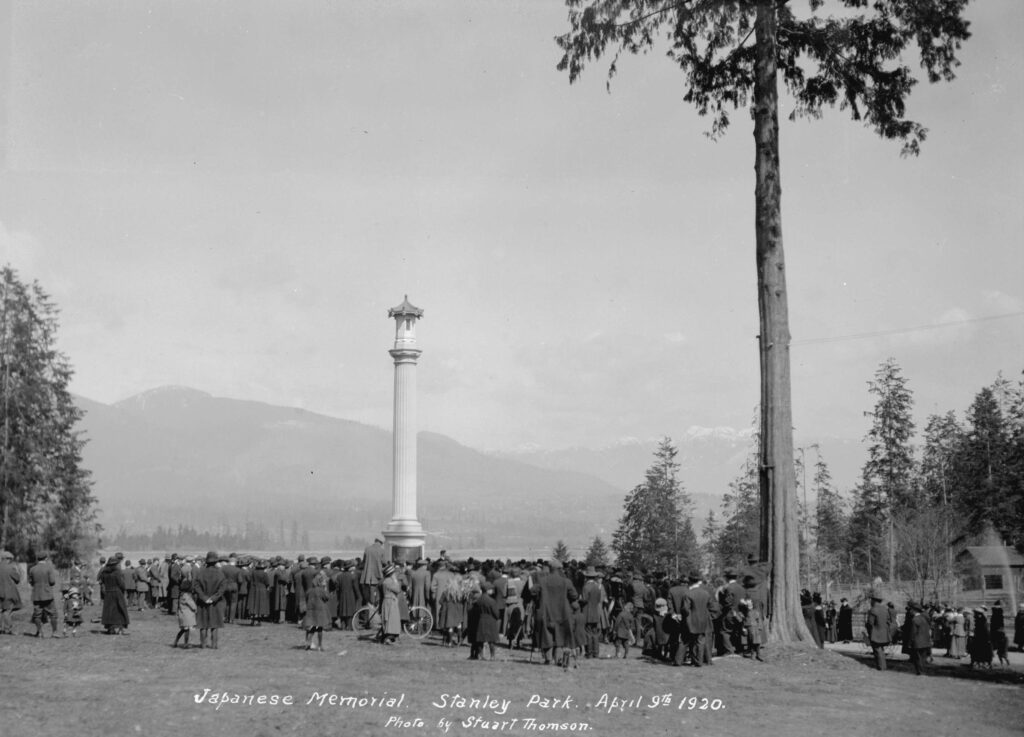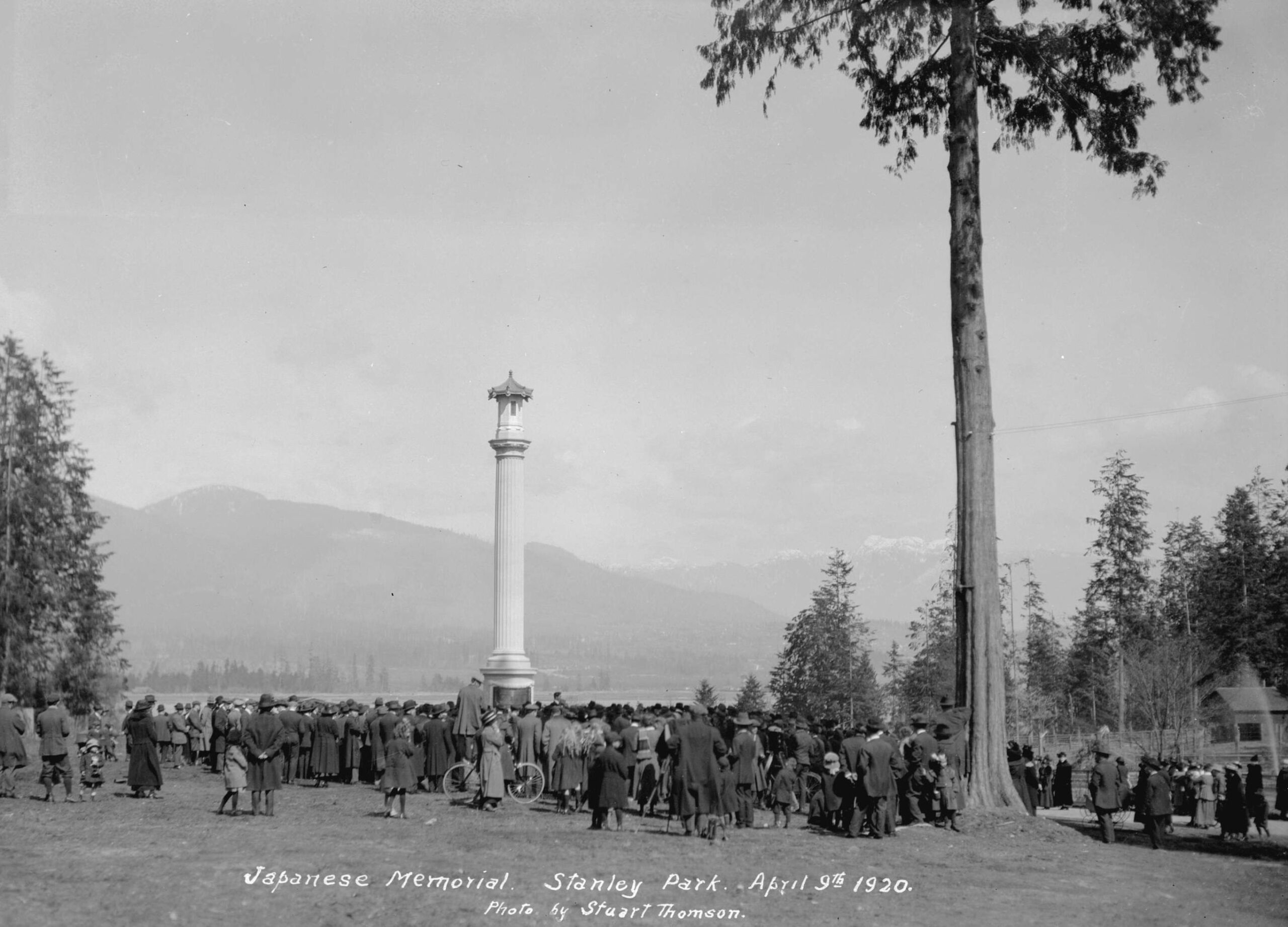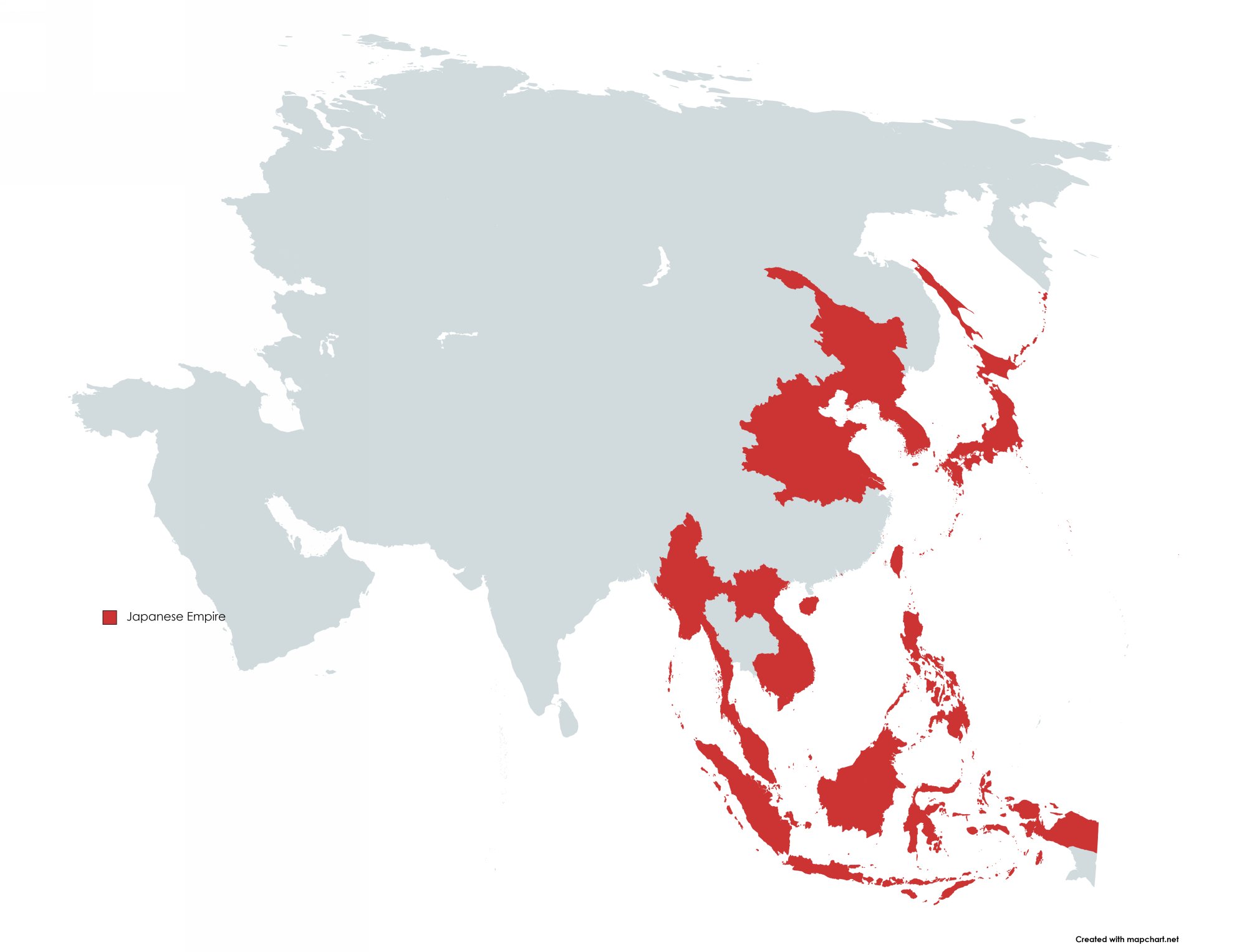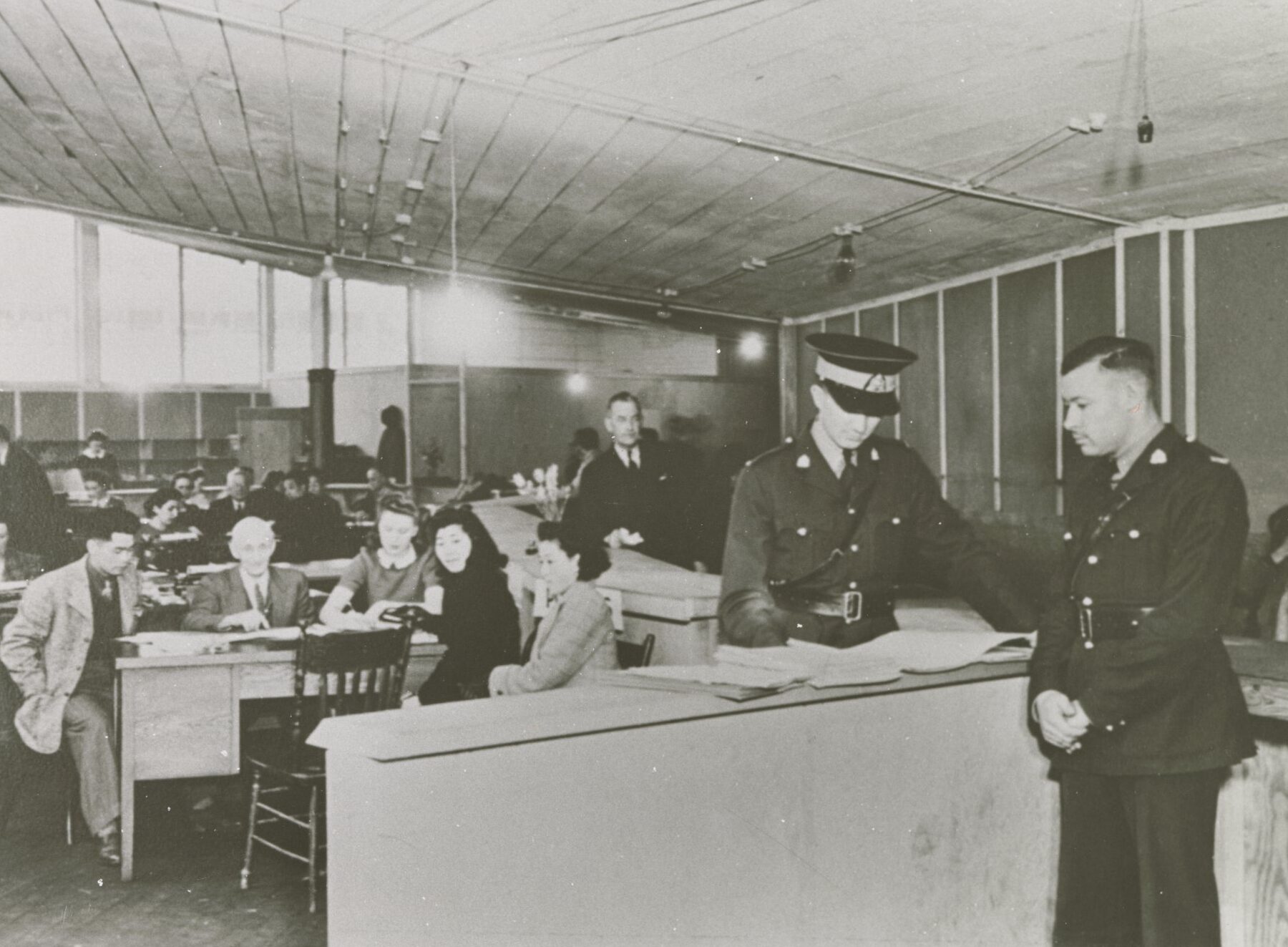
The Spanish Flu epidemic of 1918-1919 was the most severe pandemic in world history. It was spread around the world by First World War soldiers returning home. When it appeared in Vancouver, the Japanese community quickly opened a temporary flu hospital in Strathcona Public School, staffed by volunteers. Over 100 Japanese Canadians died of Spanish flu.
On April 9, 1920 (the third anniversary of the Battle of Vimy Ridge), the Japanese War Memorial was unveiled at Stanley Park in Vancouver, honouring the Japanese Canadians who fought in the First World War. It was built, at a cost of $15,000, from donations raised by the Japanese Canadian community.
On April 1, 1931, in a very close vote, the BC Legislature granted the franchise to First World War veterans of Japanese origin (Shinobu, 1931, Sunahara and Oikawa, 2015, Greenaway, 2013). The issei veterans became the first Asians allowed to vote in Canada. This was through the intense and persistent efforts of four issei (three of them First World War veterans) who went to Victoria to lobby the members of the Legislature after years of planning. However, only the veterans could vote, not their descendants (a privilege accorded to all other Canadian veterans’ descendants).
In 1936, the Japanese Canadian Citizens League was formed. Its objective was to obtain the franchise for Japanese Canadians. The League sent a delegation of four members to Ottawa to petition for the franchise. The delegates were treated in a patronizing manner by the members of parliament and the petition was turned down.

Roy Ito Collection. NNMCC 2001.4.4.5.59.

NNMCC 2000.14.1.1.2.
The New Canadian newspaper, the first English-language Japanese Canadian newspaper, was founded in 1938. It represented the voice of the nisei. The first editor was Shinobu Peter Higashi, followed by Tom Shoyama. The New Canadian was the only Japanese Canadian newspaper permitted to publish during the internment, and served as an essential and unifying voice for the dispersed community.
Following the 1907 anti-Asian riots in Vancouver, Canada and Japan signed a “Gentlemen’s Agreement” which restricted annual migration of Japanese men to Canada to 400. This restriction was not applied to Japanese women. Consequently, many women arrived in Canada from Japan, some of them as picture brides. Between 1908 and 1940, 6,500 women immigrated from Japan to Canada, resulting in the establishment of Japanese families in Canada. At the outbreak of the Second World War, most Japanese Canadians lived in coastal communities, including the large centres of Vancouver, Steveston, and Victoria, and in the farming areas in the Fraser Valley, Okanagan, and southern Alberta (Izumi, 2024) There were two amendments to the “Gentleman’s Agreement” on immigration. In 1923, the annual number of male Japanese immigrants was reduced to a maximum of 150. In 1928, the 150 maximum was amended to include women and children. By the end of the 1930s, immigration from Japan averaged 82 persons per year, well below the maximum of 150 (Adachi, 1976, p. 183).




